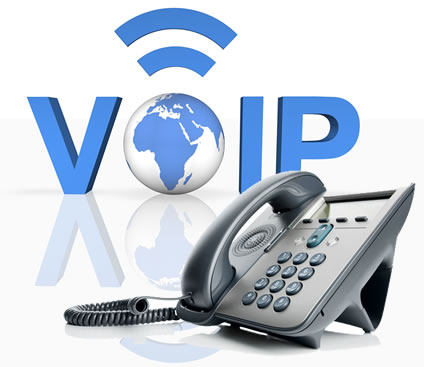Advantages and Disadvantages of VoIP for Business
Technological advancement follows an exponential curve and completely changes the outlook of our world beyond all recognition: the best illustration of the magnitude of this change is the creation of Voice over Internet Protocol. Within two decades since its implementation VoIP has managed to significantly replace the conventional methods of calling; from its conception many have dreamed of a day when VoIP will be the only surviving mode of telephony. In this article,we will take a look at the advantages and disadvantages of Voice over Internet Protocol (VoIP) for business.

What Is VoIP and How It Works
VoIP,as the name suggests,is the transmission of sound and multimedia over the internet. It uses an Analog-to-Digital Converter (ADC) to convert input such as sound and video into digital data so that it can be transmitted over the internet. The genius of VoIP lies in using Packet Switching which is the reason for its innumerable advantages. Instead of continuous information transfer like conventional circuit switching methods,VoIP breaks down the data available into small packets which carry the address of the recipient and other relevant information,alongside the payload or the main data to be transmitted. The packets are sent over different paths to the recipient where they are collected reassembled and displayed. Compared to this,circuit switching involves a circuit opening between the two callers which is restricted to data transfer between only these two callers.Advantages of VoIP
After understanding the working of VoIP,we will now address the question of what are the benefits of VoIP provides to us. One of the greatest advantages of VoIP is the massive decrease in installation and maintenance costs of the network. Firstly,no special or additional hardware is required to use VoIP. You can use your existing computer with a microphone and speakers to place a call over VoIP.
On the other hand,traditional telephones require copper to be installed,the cost of which increases with increasing area to be covered. Additionally,the wiring requires technicians to maintain it. With the advent of cloud technology in which brands like ezTalks are a pioneer,you need nothing else except a smart phone to utilize all the features of VoIP. Service providers like ezTalks take care of the maintenance and automatically update your software when better functionality and features become available.
Furthermore,in the case of a large number of connections being needed,since packet switching allows packets from different senders to be sent over the same line,a single internet connection is enough provided the bandwidth can handle the amount of data flowing per second. However,for Public Switched telephone Network (PSTN) used in traditional phone lines,each pair of callers require a separate hardware connection. The reduction in wiring also reduces workplace accidents and risks of fire hazards.
Moreover,this lack of hardware allows immense flexibility in the workforce. PSTN needs additional wiring every time a new connection needs to be added or the removal of wiring in case of a decrease in work force in order to decrease maintenance costs. Minimal physical components being needed to establish connection means VoIP is portable since the call can be made from anywhere as long as there is internet. It also enhances the productivity of the workers in a firm since they have more freedom and can work at their convenience.
Another benefit of VoIP is that it’s extremely compatible with different machines and software which puts a wide variety of features at the disposal of the user. Many VoIP programs come with features such as call holding,recording and call forwarding features. However,traditional service providers demand additional price for these special features. One very beneficial feature of VoIP is that it is also compatible with old technology such as fax. Perhaps the most valuable feature which the PSTN system is incapable of providing is the ability to hold conferences over VoIP. Since packets can take any path and be reassembled at recipient end multiple callers can transmit data to the same receiver at the same time. PSTN only allows two people to converse over a cable restricted only to their connection.
Disadvantages of VoIP
Despite all these benefits,there are some aspects in which the traditional system outshines VoIP. One of the most significant spheres in this is the question of reliability and quality of connection. The efficiency of calls over VoIP is dependent on the quality of the broadband connection. A significant decline in quality is noticed when multiple connections are established at the same time and the bandwidth cannot match the requirements. Since the PSTN network was developed solely for the purpose of transmission of voice,it is incomparable in terms of the consistency of quality of voice transmission. Even with increasing advancements,many VoIP users are very perturbed by frequent loss in connection and noise.
Another major risk of installing VoIP is the security risk associated with transmitting data over the internet. Viruses and other malicious software can tap into the transmitting data stream which can be catastrophic in case of sensitive data transfer. While encryption has reduced security risks it is still a major concern. Lastly,in cases of emergency,the calls placed to helpline cannot be traced back to locate the caller because VoIP employs IP addresses which are in some cases dynamic and change.
All in all,while the scales are obviously tilted in favor of VoIP,great leaps of improvement are still required for it to completely replace all other data transmission mechanisms.